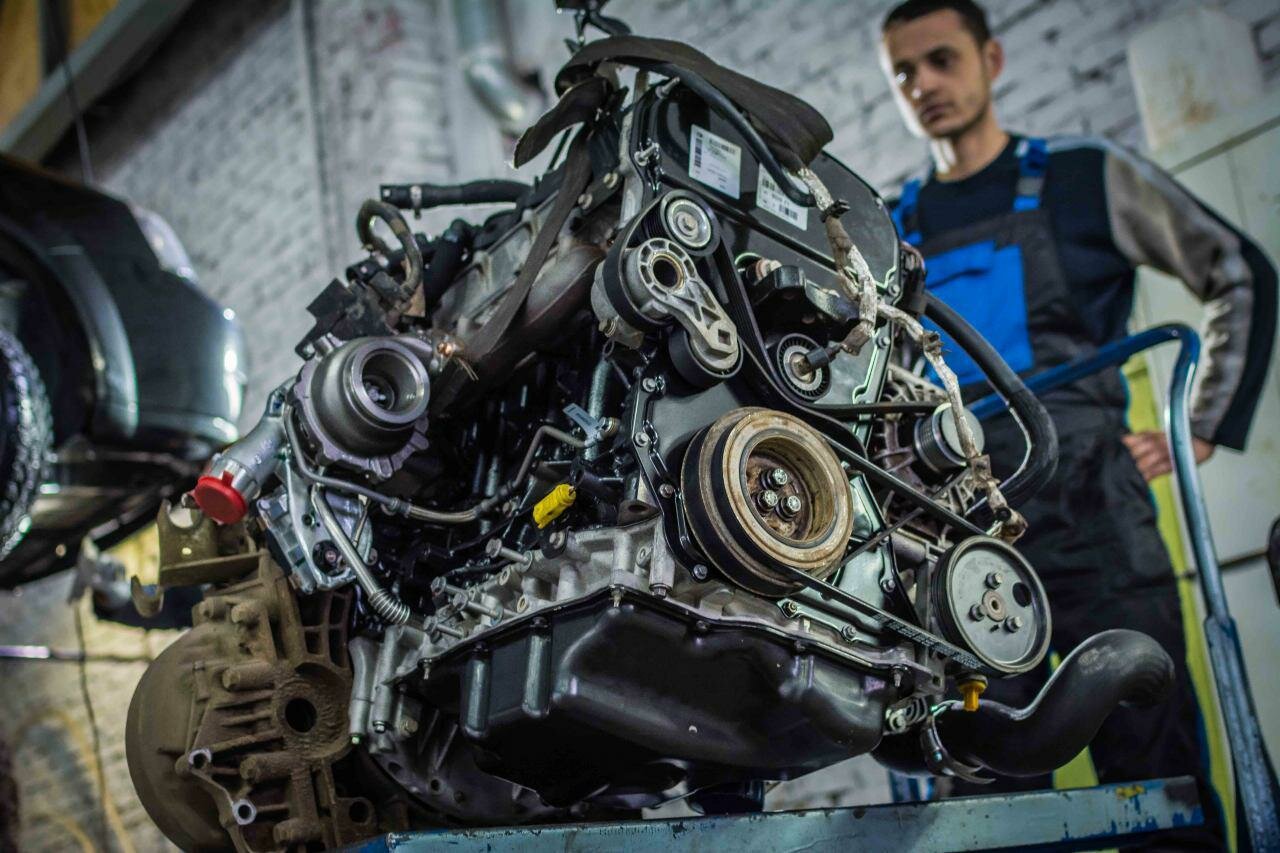The Jeep 3.6 engine, part of the Pentastar family, has been a popular choice for many Jeep models since its introduction. While it offers a decent balance of power and efficiency, it’s not without its fair share of issues. Owners often report various symptoms that can indicate underlying problems, which can range from minor annoyances to serious mechanical failures. Understanding these symptoms is crucial for any Jeep owner looking to maintain their vehicle’s performance and longevity.
Common Symptoms to Watch For
Engine Performance Issues
One of the first signs of trouble with the 3.6 engine is a noticeable drop in performance. This can manifest in several ways:
- Loss of Power: You might feel that your Jeep struggles to accelerate, especially when merging onto highways or climbing hills.
- Rough Idling: The engine may shake or vibrate more than usual when idling, indicating potential issues with the engine’s internals.
- Unusual Noises: Listen for knocking, ticking, or any other strange sounds coming from the engine bay while the engine is running.
Fuel Efficiency Decline
Another common symptom is a drop in fuel efficiency. If you’re filling up more often than usual, it could be a sign that the engine is not running optimally. Owners have reported:
- Decreased Miles Per Gallon (MPG): A significant drop in fuel economy can indicate that the engine is working harder than it should.
- Fuel Odor: A strong smell of gasoline could suggest a fuel leak or improper combustion.
Cooling System Problems
The cooling system is vital for maintaining engine temperature, and issues here can lead to more serious problems. Symptoms include:
- Overheating: If the temperature gauge is consistently in the red, it’s a clear warning sign that something is wrong.
- Coolant Leaks: Puddles of coolant under the vehicle or a sweet smell while driving can indicate leaks in the cooling system.
Electrical System Glitches
The 3.6 engine relies on various sensors and electronic components. Problems in this area can lead to:
- Check Engine Light: An illuminated dashboard warning can indicate multiple issues, from minor sensor errors to major engine problems.
- Starting Issues: Difficulty starting the engine could be a sign of battery or starter problems, often linked to the engine’s electrical system.
Transmission Complaints
While not directly related to the engine itself, transmission issues can often be felt in conjunction with engine performance problems. Symptoms may include:
- Slipping Gears: If the engine revs without a corresponding increase in speed, the transmission might be struggling.
- Delayed Engagement: A noticeable lag when shifting from park to drive can indicate transmission problems that may also affect engine performance.
Exhaust System Concerns
Finally, issues with the exhaust system can also signal problems with the 3.6 engine. Symptoms include:
- Excessive Emissions: If your Jeep is producing more exhaust smoke than normal, it could indicate incomplete combustion.
- Rattling Noises: Unusual sounds from the exhaust can point to loose components or internal damage.
Being aware of these symptoms can help Jeep owners stay ahead of potential issues with the 3.6 engine. Regular monitoring and maintenance can go a long way in ensuring that your vehicle remains reliable and safe on the road.
Understanding the Issues with the 3.6 Engine
The Jeep 3.6 engine, while known for its solid performance, has been the subject of various complaints from owners. These issues can stem from a variety of causes, often leading to frustrating experiences for drivers. Below, we’ll delve into some of the most common problems associated with this engine, along with insights from owners who have faced these challenges.
Common Problems with the 3.6 Engine
The problems with the 3.6 engine can be categorized into several key areas. Understanding these can help owners identify potential issues early on.
| Problem | Possible Causes | Symptoms |
|---|---|---|
| Oil Consumption | Piston ring wear, valve seal failure | Low oil levels, blue smoke from exhaust |
| Overheating | Coolant leaks, thermostat failure | High temperature gauge, steam from engine |
| Timing Chain Issues | Worn chain, tensioner failure | Rattling noise, engine misfires |
| Fuel Pump Problems | Clogged filter, pump failure | Engine stalling, difficulty starting |
| Electrical Issues | Faulty sensors, wiring problems | Check engine light, erratic behavior |
Owner Opinions on the 3.6 Engine Problems
Many Jeep owners have taken to forums to share their experiences with the 3.6 engine. Here are some common sentiments expressed:
- Many owners have reported excessive oil consumption, leading to frequent top-ups. Some have even mentioned that they had to add oil between changes, which raised concerns about long-term engine health.
- Overheating seems to be a recurring theme. Several users described situations where their engine temperature gauge shot up unexpectedly, often due to coolant leaks that were hard to trace.
- Timing chain issues have been a hot topic. Owners have described hearing a rattling noise, especially during cold starts, and expressed frustration over the potential cost of repairs.
- Fuel pump problems have also been highlighted. Some drivers noted that their vehicles would stall unexpectedly, leaving them stranded. This issue often led to a visit to the mechanic, where they discovered clogged filters or failing pumps.
- Electrical glitches have caused headaches for many. From check engine lights that flicker on and off to sensors that fail, these problems can be both annoying and costly to diagnose.
Root Causes of the Problems
Understanding the root causes of these issues is essential for any Jeep owner. Here are some common factors that contribute to the problems seen in the 3.6 engine:
- Design Flaws: Some issues stem from design flaws in the engine components, such as the timing chain and oil consumption problems.
- Quality of Parts: The quality of parts used in manufacturing can affect the engine’s longevity. Some components may wear out faster than expected.
- Maintenance Practices: Neglecting regular maintenance can exacerbate existing issues. Owners who skip oil changes or ignore coolant levels often find themselves facing bigger problems down the line.
- Driving Conditions: Harsh driving conditions, such as frequent towing or off-roading, can put extra stress on the engine, leading to premature wear.
The Jeep 3.6 engine, while a solid choice for many, is not without its issues. By being aware of the common problems and the experiences of other owners, you can better prepare for potential challenges. Regular maintenance and prompt attention to symptoms can help mitigate some of these issues, ensuring your Jeep remains reliable on the road.
Recalls and Technical Service Bulletins for the 3.6 Engine
When it comes to addressing issues with the Jeep 3.6 engine, recalls and Technical Service Bulletins (TSBs) play a crucial role. These documents serve as official notices from the manufacturer regarding known problems and recommended fixes. Understanding these can help owners stay informed about potential issues and necessary repairs.
Recalls Related to the 3.6 Engine
Recalls are issued when a safety-related defect is identified, or when a vehicle does not comply with federal safety standards. For the Jeep 3.6 engine, several recalls have been documented over the years. Here are some notable ones:
| Recall Number | Issue | Year | Description |
|---|---|---|---|
| 17V-435 | Engine Stall | 2017 | Vehicles may experience an engine stall due to a faulty fuel pump, increasing the risk of a crash. |
| 16V-273 | Oil Leak | 2016 | Oil may leak from the engine, leading to potential fire hazards. |
| 14V-634 | Timing Chain Failure | 2014 | Timing chain may fail, resulting in engine misfires and possible engine damage. |
Technical Service Bulletins (TSBs)
TSBs are issued to inform dealers and mechanics about specific issues that may not warrant a full recall but still require attention. These bulletins provide guidance on diagnosing and repairing known problems. For the 3.6 engine, several TSBs have been released:
Common TSBs for the 3.6 Engine
- TSB #18-030-19: Addresses oil consumption issues, providing guidelines for checking oil levels and replacing piston rings if necessary.
- TSB #21-022-20: Focuses on overheating problems, recommending inspections of the cooling system and thermostat replacement.
- TSB #19-003-19: Discusses timing chain noise, offering solutions for replacing the timing chain and tensioner to resolve rattling sounds.
- TSB #23-004-21: Covers fuel pump complaints, advising on the inspection of fuel filters and pump functionality to prevent stalling issues.
Top views |
|
|---|---|
 |
Oil, Timing Chains, Pistons: What Really Kills an Engine Prematurely? |
 |
How to Choose a Car with a Reliable Engine: Used Car Market Hacks That Actually Work |
Importance of Staying Informed
For Jeep owners, being aware of recalls and TSBs is vital. These documents not only highlight known issues but also provide peace of mind regarding the safety and reliability of your vehicle. Regularly checking for any updates from the manufacturer can help owners take proactive measures to address potential problems before they escalate.
In summary, the Jeep 3.6 engine has been the subject of several recalls and TSBs that address various issues. Staying informed about these can help owners maintain their vehicles effectively and ensure a safer driving experience.




0 Comments